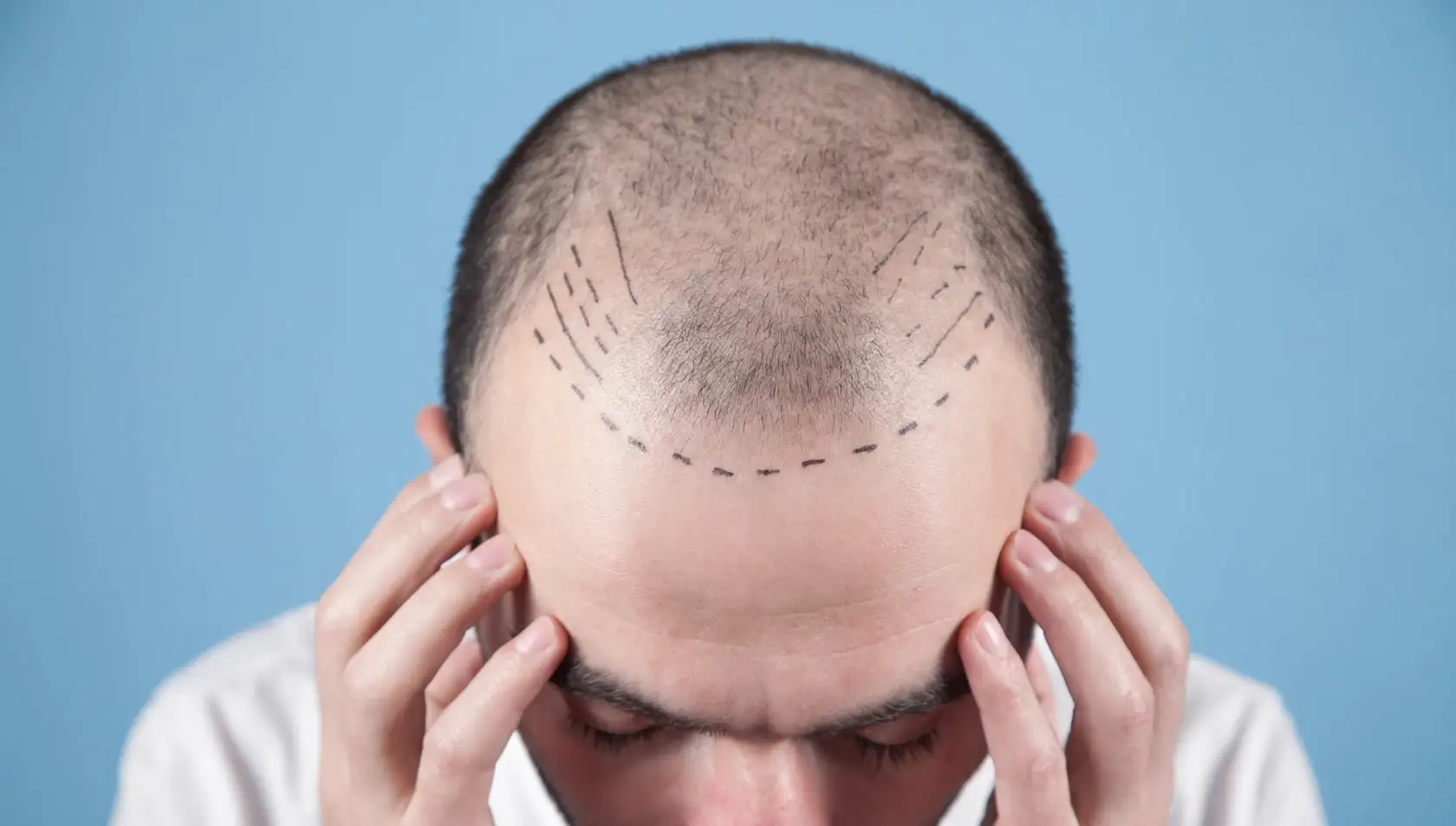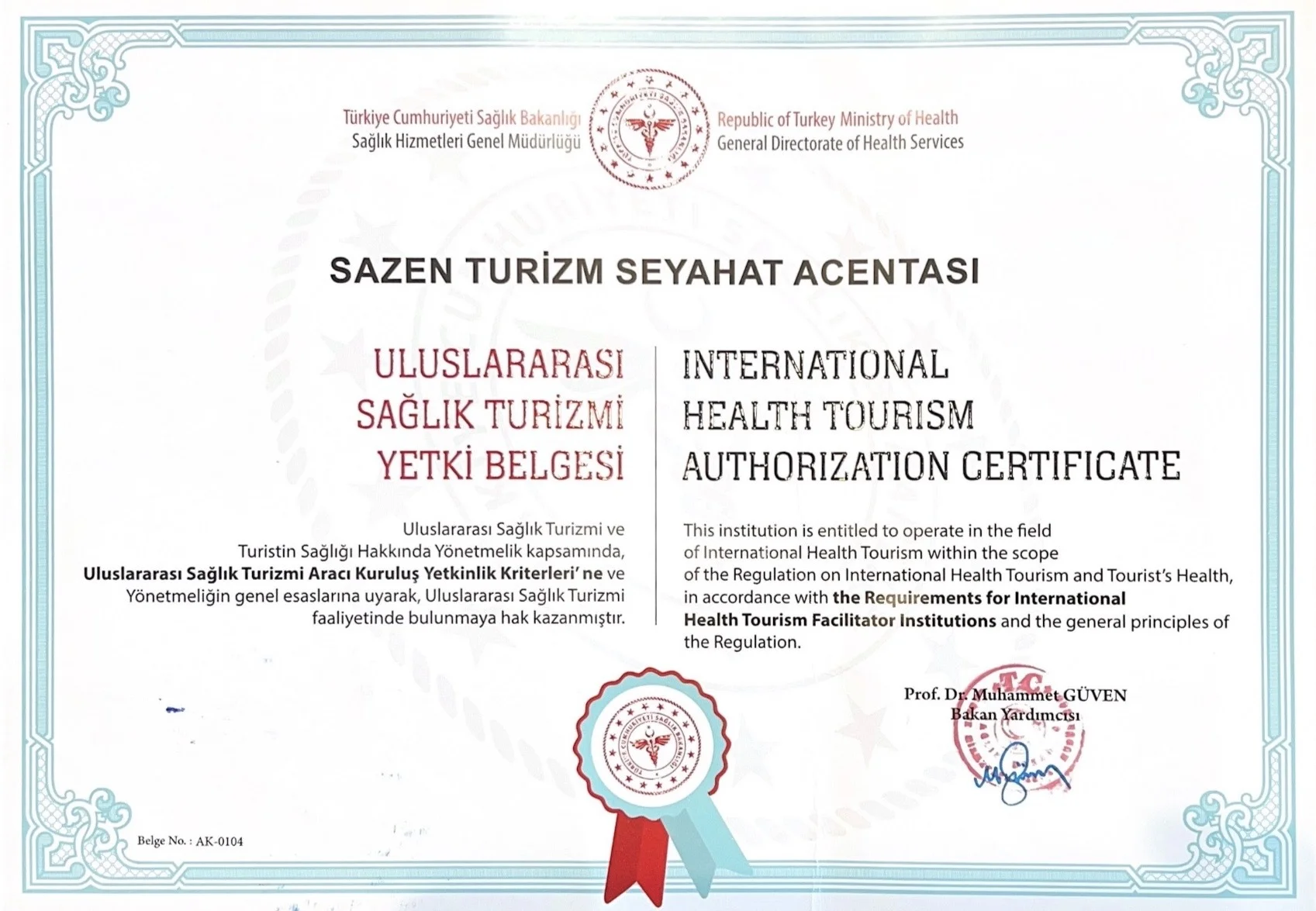Embarking on a journey to restore your hair through transplantation is a significant decision, promising renewed confidence and a fuller aesthetic. For many, Turkey has emerged as a preeminent destination, renowned for its advanced techniques, experienced surgeons, and accessible pricing. However, the success of any hair transplant procedure is intrinsically linked to the post-operative recovery process. Understanding the detailed hair transplant recovery timeline is not merely beneficial; it is absolutely crucial for achieving optimal, lasting results. This comprehensive guide provides an authoritative overview of what patients, particularly those from the United Kingdom, can expect during each phase of their healing journey, ensuring they are well-prepared and informed every step of the way.
Table of Contents
Understanding Hair Transplant Procedures and Their Impact on Recovery
Modern hair transplantation primarily utilises two sophisticated techniques: Follicular Unit Extraction (FUE) and Direct Hair Implantation (DHI). While both methods aim to relocate healthy hair follicles to areas of thinning or baldness, their procedural nuances slightly influence the initial recovery experience.
Follicular Unit Extraction (FUE)
FUE involves individually extracting follicular units from the donor area (typically the back or sides of the head) using a micro-punch tool. These grafts are then manually implanted into recipient sites created by the surgeon in the balding areas. The micro-incisions in the donor area heal rapidly, usually leaving almost imperceptible dots, which is a significant advantage in terms of post-operative comfort and cosmetic outcome. The recipient area will also feature small incisions, which contribute to the early stages of the healing hair transplant recovery comprehensive healing timeline.
Direct Hair Implantation (DHI)
In DHI, a specialised tool known as a Choi Implanter Pen is used. This pen simultaneously extracts the follicular unit and implants it directly into the recipient area without the need for pre-made incisions. This method offers enhanced control over the angle, depth, and direction of the implanted hair, potentially leading to a denser and more natural appearance. The DHI technique often results in even less trauma to the scalp compared to traditional FUE, which can sometimes lead to a slightly faster initial healing period for some patients due to reduced bleeding and swelling. Regardless of the chosen method, the fundamental principles of post-operative care remain consistent.
The Immediate Post-Operative Period: Days 1-7
The first week following your hair transplant is perhaps the most critical for setting the foundation for successful healing. Proper care during this phase minimises the risk of complications and ensures graft survival.
Day 1: Post-Procedure Observations
Immediately after your procedure, the donor and recipient areas will appear red and swollen. You may observe tiny scabs forming around each transplanted graft. A bandage might be applied to the donor area, which is typically removed the next day. Pain is usually minimal and manageable with prescribed pain medication. It is paramount to avoid touching or bumping your head to protect the freshly implanted grafts. Your clinic will provide specific instructions for the initial hours and days.
Days 2-3: Initial Cleaning and Swelling Management
Your first post-operative wash will likely occur at the clinic, where medical staff will demonstrate the proper technique for gently cleaning your scalp. This is crucial for removing dried blood and preventing infection. Swelling, particularly around the forehead and eyes, may increase during these days. Sleeping with your head elevated (at a 45-degree angle) and applying cold compresses to the forehead (avoiding the transplanted area directly) can help mitigate swelling. Prescribed antibiotics and anti-inflammatory medications should be taken as directed.
Days 4-7: Scab Formation and Gentle Washing
By this stage, the tiny scabs around each graft will become more pronounced. It is essential not to pick or scratch these scabs, as this can dislodge grafts. Continue with gentle daily washing using a specially formulated shampoo or saline solution provided by your clinic. The goal is to soften and gradually loosen the scabs. The redness and swelling will slowly begin to subside. You should continue to avoid strenuous activities, direct sunlight exposure, and hats that might rub against the grafts. Adhering to the aftercare instructions provided by your surgeon, particularly concerning washing, is vital for graft adherence and initial healing. A 2018 study published in the Aesthetic Plastic Surgery journal by Garg and Garg, “Follicular Unit Extraction Hair Transplantation: Review of the Technique and Its Current Status,” highlights the rapid healing and minimal downtime associated with FUE’s micro-incisions, directly contributing to the predictable recovery timelines observed in successful cases.
Weeks 2-4: The “Shock Loss” Phase
This period can be concerning for many patients, but it is a normal and expected part of the hair transplant recovery timeline.
Week 2: Scab Removal and Scalp Appearance
By the end of the second week, most of the scabs should have naturally fallen off, often taking the transplanted hair shafts with them. This process is normal and does not indicate graft failure. The scalp may still appear somewhat red, especially in fair-skinned individuals. You can gradually return to light, non-strenuous activities, but still exercise caution to protect the healing scalp.
Weeks 3-4: The Onset of Shock Loss
“Shock loss” refers to the temporary shedding of transplanted hairs, and sometimes even existing native hairs, in the recipient area. This phenomenon occurs as the follicles enter a resting phase due to the trauma of transplantation. It is a completely normal part of the process and a positive sign that the follicles are preparing for new growth. While discouraging to witness, it is crucial to remember that the implanted follicles are still viable beneath the scalp. Continue with gentle care and follow any specific instructions regarding scalp massage or topical treatments, if prescribed.
Months 2-6: Initial Growth and Development
This phase marks the beginning of visible new hair growth, bringing excitement and renewed anticipation.
Month 2: Little to No Visible Growth
Despite the end of shock loss, most patients will still see very little new growth at month two. The follicles are dormant, resting, and preparing. The scalp redness should largely disappear, and the donor area will have healed completely. Patience is key during this period.
Months 3-4: The Emergence of New Hairs
Around the third to fourth month, you will start to notice tiny, fine hairs emerging from the transplanted follicles. These hairs may be thin and wispy at first, but they will gradually thicken over time. Growth rates vary between individuals, so it is important not to compare your progress too strictly with others.
Months 5-6: Increased Density and Texture Improvement
By the fifth and sixth months, hair growth becomes more noticeable, with increased density and improved texture. The newly grown hairs will start to gain strength and thickness, blending more seamlessly with your existing hair. You can typically resume normal hair styling routines, though harsh chemicals or excessive heat should still be used with caution.
Months 6-12: Significant Growth and Maturation
This is a period of substantial transformation, where the majority of the final results begin to take shape.
Months 7-9: Continued Density and Length
The hair will continue to grow in length and density during these months. The transplanted hairs will mature, becoming thicker and stronger. Most patients will see a significant improvement in their overall hair density and coverage. The hair will also begin to integrate better with your natural hair, making the transplant less detectable.
Months 10-12: Near-Final Results and Maturation
By the end of the first year, approximately 80-90% of the final results will be visible. The transplanted hairs will have reached a good length and density, and the hairline will appear natural and well-established. Any remaining redness in the scalp should have fully resolved. The hair will continue to mature slightly over the next few months, achieving its ultimate thickness and texture.
Beyond 12 Months: Final Results and Long-Term Care
The full maturation of transplanted hair can take up to 18 months, particularly for crown areas.
12-18 Months: Full Maturation
Between 12 and 18 months, the transplanted hair will reach its final density, texture, and natural appearance. This is when you can fully appreciate the comprehensive outcome of your hair transplant. Continued care, including a healthy diet and potentially physician-recommended hair growth supplements, can help maintain the health of both transplanted and native hairs.
Long-Term Maintenance
While transplanted hair is typically resistant to DHT (the hormone responsible for pattern baldness), existing native hairs around the transplanted area may still be susceptible to future thinning. Your surgeon may recommend long-term maintenance treatments, such as Finasteride, Minoxidil, or PRP (Platelet-Rich Plasma) therapy, to preserve and enhance your overall hair density. Regular follow-ups with your clinic or a dermatologist are advisable to monitor your progress and address any concerns.
Crucial Post-Operative Care Instructions
Diligent adherence to post-operative care is paramount for a successful hair transplant recovery timeline.
- Protect the Grafts: For the first 10-14 days, avoid touching, rubbing, or scratching the transplanted area. Sleep with your head elevated to prevent accidental contact with bedding.
- Gentle Washing: Follow your clinic’s specific washing protocol diligently. This usually involves a special shampoo and gentle application technique to prevent dislodging grafts and remove scabs effectively.
- Avoid Strenuous Activity: Refrain from heavy lifting, intense exercise, and activities that cause excessive sweating for at least 2-4 weeks. Sweating can increase the risk of infection and graft damage.
- Sun Protection: Protect your scalp from direct sunlight for several months. Wear a loose-fitting hat (only after the initial delicate period, usually from day 10 onwards) or use a high-SPF sunscreen specifically designed for sensitive scalps.
- No Alcohol or Smoking: Avoid alcohol for at least 5-7 days post-surgery, as it can thin the blood. Smoking should be avoided for several weeks, as nicotine constricts blood vessels, impeding healing and graft survival.
- Medication Adherence: Take all prescribed medications (antibiotics, pain relievers, anti-inflammatories) exactly as directed by your surgeon.
- Healthy Diet and Hydration: Maintain a balanced diet rich in vitamins and minerals, and stay well-hydrated to support the body’s natural healing processes.
Potential Complications and How to Address Them
While hair transplant procedures are generally safe, understanding potential complications is part of an authoritative approach to recovery.
Swelling and Bruising
Common in the first few days, swelling can extend to the face and eyes. It typically resolves within a week. Persistent or severe swelling should be reported to your clinic.
Infection
Though rare with proper hygiene and antibiotics, signs of infection include increased redness, warmth, pus, or fever. Immediate medical attention is necessary if these symptoms arise.
Numbness or Tingling
Temporary numbness or tingling in the donor or recipient areas is common due to nerve irritation during surgery. Sensation usually returns gradually over several weeks to months.
Folliculitis
This is an inflammation of the hair follicles, appearing as small pimples. It can occur a few weeks to months post-transplant as new hairs begin to emerge. Warm compresses and prescribed topical treatments usually resolve it.
Scarring
With FUE and DHI, scarring is minimal, appearing as tiny dots in the donor area that are usually undetectable. Keloid scarring is rare but a possibility for individuals prone to it. Your surgeon will discuss this risk during consultation.
Nutritional Support for Optimal Recovery
A balanced diet plays a pivotal role in facilitating healing and promoting robust hair growth. Key nutrients are essential for follicular health and cellular regeneration.
Protein
Hair is primarily made of protein. Ensuring adequate protein intake (lean meats, fish, eggs, legumes) provides the building blocks for new hair strands and helps repair tissues.
Vitamins and Minerals
- Vitamin B Complex (especially Biotin): Supports hair growth and overall hair health. Found in whole grains, nuts, and eggs.
- Vitamin C: Essential for collagen production, which supports hair follicle structure, and acts as an antioxidant. Citrus fruits, berries, and leafy greens are good sources.
- Vitamin D: Plays a role in hair follicle cycling and growth. Sunlight exposure, fatty fish, and fortified foods are sources.
- Iron: Crucial for oxygen transport to hair follicles. Red meat, spinach, and lentils are iron-rich.
- Zinc: Involved in hair tissue growth and repair. Found in meat, shellfish, nuts, and seeds.
Hydration
Drinking plenty of water is fundamental. Proper hydration supports cellular function, nutrient delivery, and waste removal, all vital for a smooth recovery.
Why Choose Turkey for Hair Transplants?
Turkey has solidified its reputation as a global leader in medical tourism, particularly for hair transplantation. This ascendancy is attributed to a compelling combination of factors that appeal strongly to international patients, especially those from the United Kingdom seeking high-quality, cost-effective solutions.
Firstly, the cost-effectiveness of hair transplant procedures in Turkey is undeniable. When compared to the significantly higher prices in the UK, patients can often save thousands of pounds, even when factoring in travel and accommodation. This economic advantage does not, however, come at the expense of quality.
Secondly, Turkish clinics boast world-class facilities equipped with the latest technology. Surgeons in Turkey are highly experienced, performing these procedures routinely, which contributes to a high level of expertise and refined techniques. Many clinics are internationally accredited, ensuring adherence to rigorous medical standards.
Lastly, the all-inclusive packages offered by many Turkish clinics simplify the medical travel experience. These often cover airport transfers, accommodation, post-operative care kits, and even interpreter services, making the journey seamless for international patients. Furthermore, locations like Antalya, renowned for their pleasant climate and hospitality, enhance the recovery experience, as highlighted by resources like Antalya Climate: Optimal Seasons for Medical Travel.
Comparison: Hair Transplant in Turkey vs. United Kingdom
Patients from the UK often weigh their options between domestic clinics and those abroad. A clear comparison illuminates why Turkey remains a preferred choice for many seeking a Hair Transplant in Turkey.
| Service/Item | Turkey Price (GBP) | United Kingdom Price (GBP) |
|---|---|---|
| FUE Hair Transplant | £2,800 | £7,500 |
| DHI Hair Transplant | £3,500 | £9,000 |
| PRP Therapy (per session) | £250 | £700 |
| Hairline Restoration | £2,500 | £7,000 |
| Post-op Medication | £100 | £300 |
This table illustrates the significant financial advantage of choosing Turkey for hair transplantation, often allowing patients to access superior care at a fraction of the cost.
| Factor | Turkey | United Kingdom |
|---|---|---|
| Cost-Effectiveness | Significantly lower costs, all-inclusive packages often available. | High costs, fewer all-inclusive options. |
| Waiting Times | Generally short, often immediate availability. | Can be long, weeks to months for consultations and procedures. |
| Technology & Facilities | State-of-the-art clinics, advanced equipment. | Modern facilities, but often at higher premium. |
| Surgeon Expertise | High volume of procedures leading to extensive experience. | Experienced surgeons, but potentially fewer specific hair transplant specialists. |
| Travel & Accommodation | Often included in packages, comfortable, tourist-friendly. | No travel required, but no ‘medical holiday’ experience. |
| Post-Operative Support | Comprehensive follow-up via telehealth, dedicated patient coordinators. | Local follow-ups, may require additional appointments. |
CK Health Turkey: Your Partner in Hair Restoration
At CK Health Turkey, we understand the importance of a meticulously planned and expertly executed hair transplant journey, from the initial consultation to the final stages of recovery. As a leading provider for international patients, we are committed to delivering exceptional care, state-of-the-art procedures, and comprehensive support throughout your hair transplant recovery timeline.
Our clinics in Turkey feature highly skilled, board-certified surgeons who specialise in the latest FUE and DHI techniques, ensuring natural-looking and long-lasting results. We pride ourselves on transparent pricing, luxurious accommodation options, and dedicated patient coordinators who speak your language, facilitating a stress-free experience. We guide you through every phase of recovery, providing detailed instructions, post-operative care kits, and continuous support to ensure optimal graft survival and hair growth. Your journey to restored confidence begins with a commitment to excellence, and that is precisely what CK Health Turkey offers.
We invite you to experience the unparalleled standards of medical care and hospitality that make CK Health Turkey the preferred choice for international patients seeking hair restoration. Get in touch with our team today for a personalised consultation or visit our website to learn more about how we can help you achieve your hair restoration goals.
Successfully navigating the hair transplant recovery timeline requires diligence, patience, and adherence to expert guidance. While the journey involves various stages, each bringing its own set of expectations and care requirements, the eventual outcome—a fuller head of natural-looking hair—is a deeply rewarding one. By choosing a reputable clinic in Turkey, such as CK Health Turkey, patients from the United Kingdom can embark on this transformative journey with confidence, knowing they are supported by experienced professionals every step of the way. Understanding the process, from the initial healing to the final maturation of the grafts, empowers you to play an active role in your recovery and ensures you achieve the best possible aesthetic and psychological benefits from your hair transplant.
FAQs
How long does the hair transplant recovery timeline typically last?
The most critical initial recovery phase is the first 10-14 days. Visible hair growth usually begins around 3-4 months, with 80-90% of final results seen by 12 months, and full maturation up to 18 months.
Is shock loss a normal part of the recovery process?
Yes, shock loss is a completely normal and expected phase where transplanted hairs temporarily shed, usually occurring between weeks 2-4. It’s a sign that the follicles are entering a resting phase before new growth.
How should I wash my hair after a transplant?
Your clinic will provide specific instructions and often a special shampoo. Generally, gentle washing with light pressure is recommended, avoiding direct water jet impact for the first few weeks to protect the grafts.
When can I resume normal activities and exercise?
Light, non-strenuous activities can usually be resumed after 2-4 weeks. Strenuous exercise, heavy lifting, and activities that cause excessive sweating should be avoided for at least a month to ensure graft integrity and prevent infection.
Will there be noticeable scarring after the procedure?
With modern FUE and DHI techniques, scarring in the donor area is minimal, appearing as tiny, almost imperceptible dots. The recipient area typically heals without visible scarring. Your surgeon will discuss this during consultation.
What steps can I take to ensure optimal graft survival?
Adhere strictly to all post-operative care instructions, protect your scalp from sun and trauma, avoid smoking and alcohol, take prescribed medications, and maintain a healthy diet and hydration. Regular communication with your clinic is also vital.
When will I see the final results of my hair transplant?
While significant growth is evident by 6-9 months, the final, mature results, including optimal density and texture, typically take 12 to 18 months to fully manifest.
Are hair transplants in Turkey safe?
Yes, reputable clinics in Turkey adhere to high medical standards, utilise advanced technology, and employ experienced, board-certified surgeons. It is crucial to choose a well-regarded clinic like CK Health Turkey for safety and successful outcomes.
Do I need to take special medications after the transplant?
Your surgeon will likely prescribe antibiotics to prevent infection and anti-inflammatory medications to manage swelling. They may also recommend long-term maintenance medications like Finasteride or Minoxidil to preserve existing hair.
Can I wear a hat after a hair transplant?
For the first 10-14 days, you should avoid wearing any hats that put pressure on the grafts. After this initial period, a loose-fitting, soft hat can be worn to protect against sun, but ensure it doesn’t rub or irritate the transplanted area.




